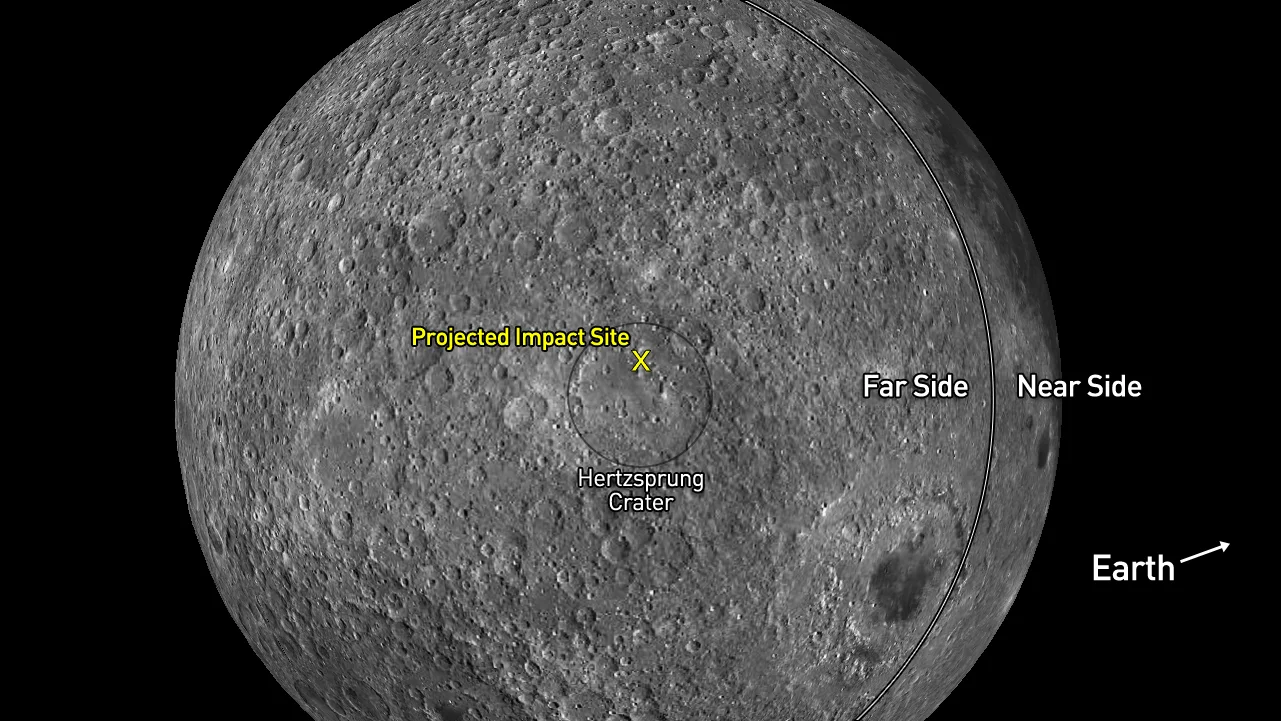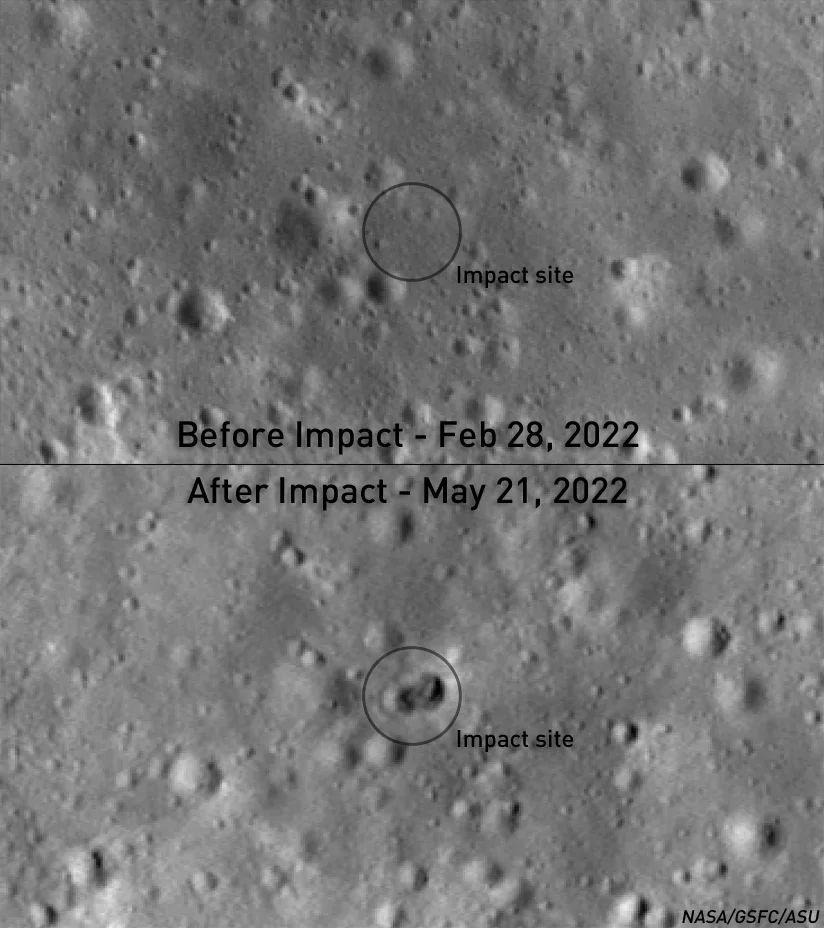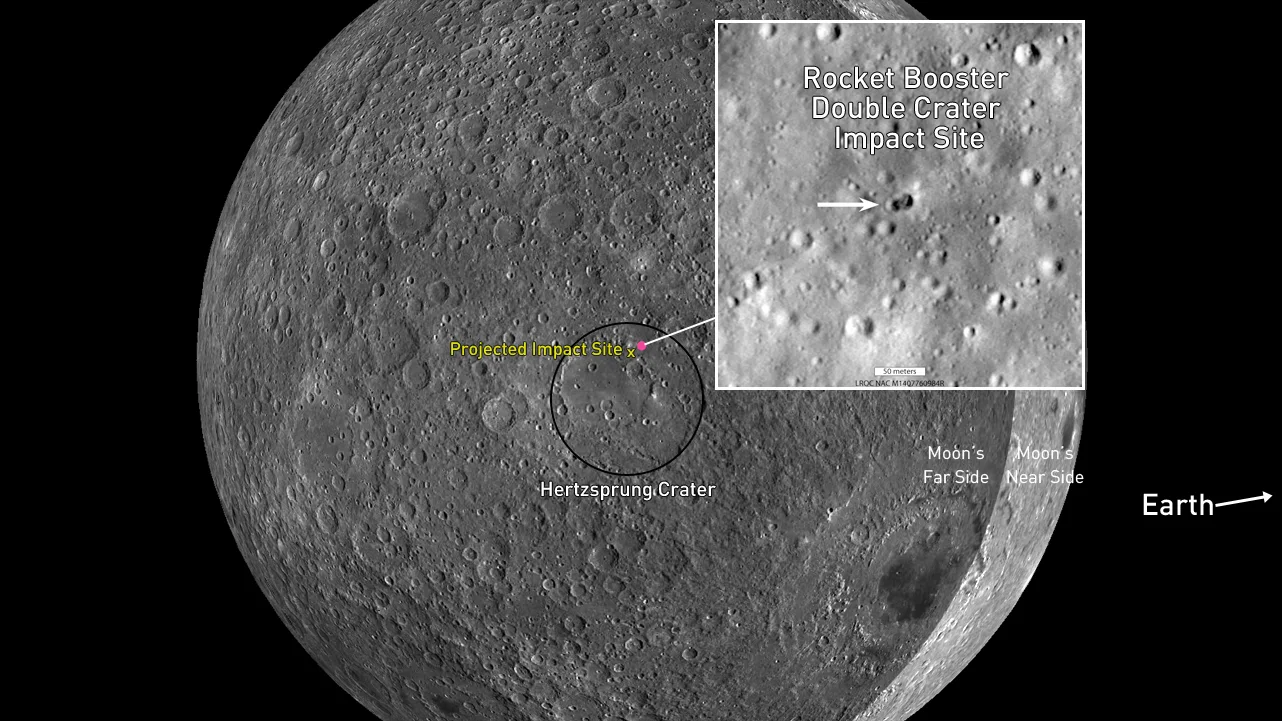
Unique double crater spotted from March rocket impact on the Moon
NASA says no other rocket crash on the Moon has produced a crater like this.
On March 4, 2022, a spent rocket booster slammed into the surface of the Moon. We now have our very first look at the crash site, and what NASA saw there may help them to finally identify exactly who launched this rocket in the first place.
Back in January, astronomers spotted an object out in space, whizzing by on an unusual orbit. It was not just circling around Earth, but travelling far out, past the orbit of the Moon, as well. Some sleuthing on their part identified this as a piece of space junk, named WE0913A.
At first, it was thought to be the upper stage of the SpaceX rocket that launched NOAA's Deep Space Climate Observatory (DSCOVR) out to Lagrange Point 1 in 2015. However, further investigation revealed an even more likely candidate — the upper stage of China's Long March 3C booster, which carried the Chang'e 5-TI lunar sample return test mission to the Moon in 2014.
Regardless of exactly which rocket it was, WE0913A was found to be on a doomed trajectory. As astronomer Bill Gray detailed on the Project Pluto website, this object would slam into Hertzsprung Crater, on the far side of the Moon, on March 4, 2022.

Astronomer Bill Gray traced WE0913A’s final destination to the northern part of Hertzsprung crater, a large impact crater on the far side of the Moon. Credit: Scott Sutherland/NASA/LROC/ASU
Given this location and the timing of the crash, the impact site was blocked from our view on Earth. Also, it would not be directly visible to any spacecraft at the time.
As luck would have it, though, NASA's Lunar Reconnaissance Orbiter has been taking regular images of the Moon's surface since it launched in 2009. So, we only needed to wait for it to eventually pass over the crash site, and then compare the results with views from before.
As of June 24, we now have the results of that flyover.

Before and after images from the rocket crash site, in the northern part of Hertzsprung Crater, reveal that the rocket impact on March 4, 2022, produced this double crater, roughly 28 meters wide. Credit: Scott Sutherland/NASA/GSFC/Arizona State University
Gray's prediction for the impact site was nearly spot-on, as well.

This updated view of WE0913A's final destination is compared to the original predicted site. The inset image shows the resulting impact craters. Credit: Scott Sutherland/NASA/LROC/ASU (Inset: NASA/GSFC/ASU)
The Arizona State University team that operates the Lunar Reconnaissance Orbiter Camera (LROC) says that seeing a double crater was an unexpected part of this impact.
"Typically a spent rocket has mass concentrated at the motor end; the rest of the rocket stage mainly consists of an empty fuel tank," they wrote in a post on Thursday. Thus, spent rockets crashing into the Moon have only left single craters up until now. LROC images of the crash sites from the Apollo 13, 14, 15 and 17 Saturn V upper stages show this.

The crash sites of the Saturn V upper stages from the Apollo 13, 14, 15 and 17 missions are shown here in images from the Lunar Reconnaissance Orbiter Camera. The crater diameters range from 35 to 40 meters in the longest dimension. Credit: NASA/Goddard/Arizona State University
With this unusual double crater, the team believes that this particular rocket booster had large masses at both ends. This feature may help them identify which rocket this was from and who launched it.











